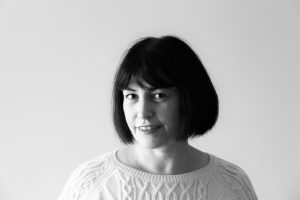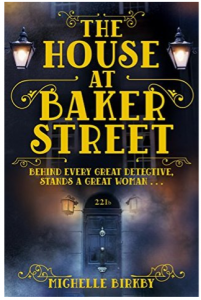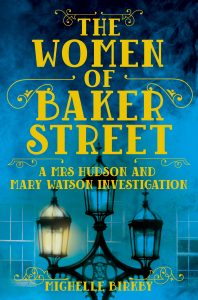Crime Fiction: Why I Love The Golden Age
 I have always loved crime. I love reading about it. Fiction or non-fiction. Classic Golden Age mysteries to the intricacies of cyber-crime, polite tea with the vicar to the goriest thrillers. I love a crime story.
I have always loved crime. I love reading about it. Fiction or non-fiction. Classic Golden Age mysteries to the intricacies of cyber-crime, polite tea with the vicar to the goriest thrillers. I love a crime story.
I love the puzzles. I like the characters. I’m intrigued by the unusual methods. I’m excited by the chase. I’m gripped by the dénouement.
The first crime novels I ever read were Enid Blyton’s. I know they’re mostly seen as examples of nineteen-fifties middle class childhoods now, but they are mysteries. I devoured them all. I still enjoy reading them. Of course, they’re obvious now – the villain is always the adult who is either nasty to the children, or far, far too friendly. But they do have moments of atmosphere, a second or two of a chill down the spine.
From there, I read the Hardy Boys.
And then, one day, I found an Agatha Christie.
I don’t remember which was the first one. It was probably an Agatha Christie. Joan Hickson was playing a perfect Miss Marple on screen at the time. The Christie books were all released in new editions, with bright covers and priced at £1.99 – within reach of my pocket money – and that’s when a whole new world opened up. I had found the Golden Age of crime.
I read them all. I scoured second hand shops for them. I found Ngaio March and Margery Allingham and Dorothy L Sayers and all those wonderful Agatha Christies – and I was hooked. Devoted. Intoxicated. Obsessed. Entranced.
Hardy Boys and Famous Five seemed very pale in comparison.
First, those detectives. True, Ngaio Marsh and Margery Allingham and Dorothy L Sayers all had much the same detective – tall, lean, ascetic, aristocratic men, who could all be quite irritating in their foolishness. But the women – oh, the women! Artistic Agatha Troy. Clever writer Harriet Vane. The brave engineer Amanda. These were women I wanted to be.
 And of course, there were Agatha’s. I wanted to be Tuppence of Tommy and Tuppence when I was younger. Now I want to grow up to be like Miss Marple. I was puzzled and strangely fascinated by Poirot. These weren’t detectives like any I’d read before. They were different. They were flawed. They almost got it wrong, but eventually got it brilliantly right.
And of course, there were Agatha’s. I wanted to be Tuppence of Tommy and Tuppence when I was younger. Now I want to grow up to be like Miss Marple. I was puzzled and strangely fascinated by Poirot. These weren’t detectives like any I’d read before. They were different. They were flawed. They almost got it wrong, but eventually got it brilliantly right.
These people taught me to think. From them I learned to look, and listen, and deduce. The Golden Age heroes and heroines weren’t just men and women I admired. They were people I wanted to be.
Then there were the characters – including villains. I’d never really met villains that were just like everyone else before. I’d certainly never met villains I liked. There were shy wives who loved their husbands, and obsessed scientists and unfeeling children and abuse victims and all sorts of people. I actually quite liked them. I could understand them.
I’d had quite an isolated childhood. I hadn’t met many people, and as an achingly shy child, I hadn’t spoken much to those I met. I had never really understood people. But these books showed me what people could be really like.
In a crime book, ordinary people are part of the most intrusive, traumatic event of their lives. One – or maybe two – of them, find themselves driven to an extreme most people never reach, doing an action most find beyond the pale. Of course, this is true of most crime books. But somehow, the Golden Age people, especially the murderers, are more human. They are gentler, quieter sometimes. They are bound by a more restrictive society, some conforming tightly to the rules, some having the courage – and it needs courage, and daring, and intelligence – to break out of it.
They aren’t the obsessive serial killers of our age, seeing people only as numbers to be added to the total. They don’t kill for pleasure – or rather, some do, but a need for something else, money, love, power is their primary motive. They are not unthinking. They are intelligent, interesting people that we would probably quite like if we met.
 Dorothy L Sayers was once asked how she imagined a murderer. She said they were just like an ordinary person, who might get angry or jealous – but you or I get over that feeling. The murderer never does, and it consumes them until they have to do something about it.
Dorothy L Sayers was once asked how she imagined a murderer. She said they were just like an ordinary person, who might get angry or jealous – but you or I get over that feeling. The murderer never does, and it consumes them until they have to do something about it.
Even Hastings, Poirot’s sidekick, almost murders someone – it’s only Poirot’s ingenuity who stops him.
And finally, there were plots. I delighted in those plots. An esoteric knowledge of poisons in Agatha Christie. Gory, elaborate methods of death in Ngaio Marsh. Puzzles to be taken part and examined and put together again as the detective continues his – or her – remorseless hunt for the truth. Twists and turns that surprise all of us, over and over again. including, of course, the greatest plot of all – the breathless audacity of The Murder of Roger Ackroyd.
After the Golden Age, I moved onto Arthur Conan Doyle, and Sherlock Holmes, which gave me my current detectives, Mrs Hudson and Mary Watson. I still read all sorts of crime, right from Edgar Allen Poe’s stories, to the Jacqueline Winspear I read last week. I will always love crime novels in all it’s manifestations.
But I will also always go back to the Golden Age. Where everyone is restrained and polite even as they kill each other. Where detectives are often wrong, but never lose. Where plots are fiendishly complicated and murders never ordinary and rarely simple.
When I curl up on the sofa on a rainy Sunday afternoon with a cup of tea, and want to be engrossed in a book for hours, it’s the Golden Age I turn to.
—
Michelle Birkby is the author of the CWA Historical Dagger nominated House at Baker Street (chosen for the Sainsbury’s Book Group, and several others) first in the Mrs Hudson and Mary Watson mysteries. She was born in London, and still lives there. She has worked in libraries and offices, and left work to pursue her love of writing. She tried every genre before realising crime was her passion. House at Baker Street has already been translated into Czech, and recorded as an audio book. The second book in the series, The Women of Baker Street, will be published in February 2017.
Find out more about Michelle: https://www.panmacmillan.com/authors/michelle-birkby
Follow her on Twitter: @michelleeb
Facebook: https://www.facebook.com/MrsHudsonandMaryWatson
Category: Contemporary Women Writers, On Writing
























